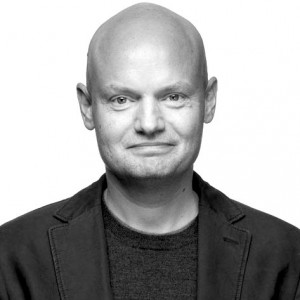
Strategy as a Creative Act II: The Limits to Management Consulting
Management consulting firms have been adopting the mantle of design in recent years. Even venerable strategy firms like McKinsey are talking about customer journey mapping and customer experience design. And some design consultancies have been applying their design toolkits to strategic business questions for many years.
When I first joined frog in 2009 as a strategist, I recall being rather surprised that Fortune 500 firms would take fundamental strategy questions such as “Where should we play?” or “How should we compete?” to a design firm. This has now become the norm, and the boundary between management consulting and design consulting seems increasingly fuzzy because both types of firms are tackling the same questions for the same clients, and appear to be adopting each other’s techniques. However, beneath the surface, there is a profound difference in how the two types of firm tackle these questions, and that difference matters because it changes the outcome.
The traditional toolkit of strategy is analytical; business schools teach strategists to ground their thinking on data. Management consultants educated in this way begin strategy projects with an “as-is” analysis, digging deep into the world to better understand it. This might consist of an industry analysis to understand market dynamics, a value chain and profit pool analysis to see where value is being created and captured, and competitive analysis to better understand the direct and indirect competition in a given market. Management consultants review customer data, seeking to understand spending patterns, needs, wants and behaviors, and use those insights to segment the market into more attractive and less attractive customer groups.
Having done this analysis, and gained an understanding of the world as it is today, management consultants then look for opportunities for their clients to compete. Red oceans or blue, the idea is to analyze your way from the “as-is” state to a “to-be” state. It is a rigorous, deductive, analytical process where every recommendation strives to be defensible with data uncovered during the initial investigations. It also betrays an underlying mental model that sees the world largely as a fixed canvas or map within which territory to compete exists and must be found.
Designers do not see the world as a fixed canvas. They are an optimistic bunch, who see the world as a range of possibilities that can be crafted and bent to our will. Design consultants begin a project by looking for inspiration that will drive their thinking and ideation about the world as it should be. Inspiration can come from within an industry or outside of it. Sometimes a societal trend will trigger an idea. Or it could be driven by ethnographic research observing potential customers. At this stage in the process, design consultants gleefully dance over the “as-is” state, as they generate lots of ideas of the “should-be” state. Only when this creative, generative phase is completed do we bring out the analytical tools to evaluate the ideas. Is there a market and business model that will support this idea? Does the client have the right assets and capabilities to deliver this value proposition? Is the technology required to implement this idea mature enough? How will this idea change an industry dynamics or competitive set? Traditional strategy tools are used to evaluate the ideas to get a sense of what we need to do in order to make them real.
As a strategist in a design consultancy, I am clearly a convert to strategy as a creative act. As I outlined in an earlier post, it is easy for analytical approaches to kill ideas too soon, but worse than that, analytical approaches are usually too constraining to generate truly radical ideas. If you start by seeing the world as a given, you inevitably end up simply tweaking it a bit. This is the mindset that benchmarks its way to mediocrity.
For some strategy challenges, being “best of breed” is good enough, and it is true that analytical approaches work extremely well for cost optimization problems. But to enhance revenue and to grow—either through new offerings or new forms of customer experience—creative approaches work better. If you want to do something that is truly new, to create value in a way that has never been done before, to lead rather than follow, and to reframe customer expectations, you need the tools of design. Some management consultants understand this, and are experimenting with design. But it is not enough to add journey maps and post it notes to an analytical process; you need to embrace a designer’s mindset. With this mindset frog is tackling critical business challenges for our clients, helping them with new venture creation, growth strategy, and customer experience design.

Tim leads a global team of business and product strategists who work alongside frog designers and technologists to bring game changing innovations to market. He has worked in Silicon Valley for 15 years in a variety of product, strategy and marketing roles.
We respect your privacy
We use Cookies to improve your experience on our website. They help us to improve site performance, present you relevant advertising and enable you to share content in social media. You may accept all Cookies, or choose to manage them individually. You can change your settings at any time by clicking Cookie Settings available in the footer of every page. For more information related to the Cookies, please visit our Cookie Policy.